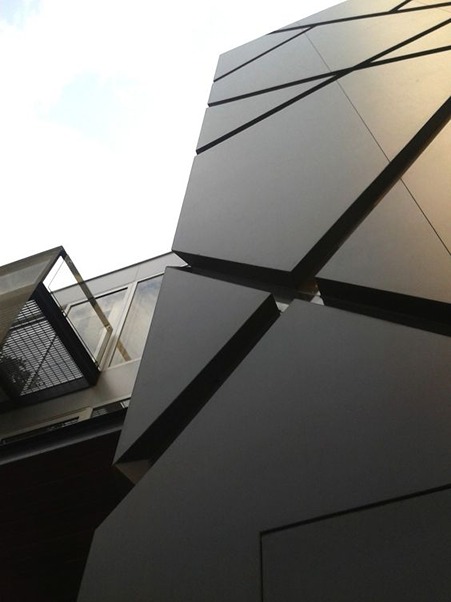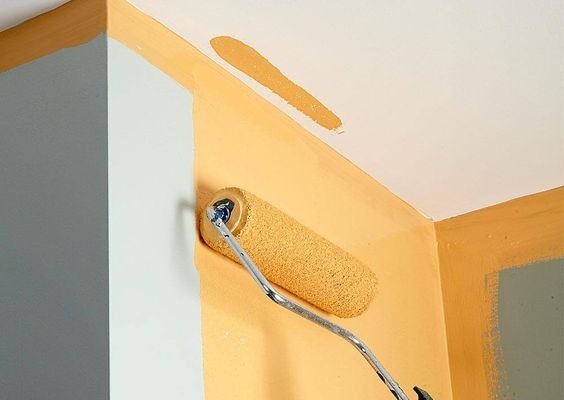15 Useful Types of Construction Material
Building materials encompass a wide range of types of construction materials utilized in construction, serving various purposes for building projects, particularly for house construction. Commonly used building materials include wood, cement, aggregates, metals, bricks, concrete, and clay. The selection of these materials is primarily based on their cost-effectiveness in relation to the specific construction project. Throughout history, humans have employed naturally occurring substances like clay, sand, wood, rocks, and even organic elements such as twigs and leaves to construct buildings. In addition to natural materials, there is a plethora of man-made products with varying degrees of synthetic components that fall under the category of construction materials. These products have been developed and manufactured as part of the established building materials industry in many countries. These materials used in specialized trades like carpentry, plumbing, roofing, and insulation, where specific types of construction materials are used. Reference encompasses habitats and structures, including residential homes, highlighting the importance of choosing appropriate building materials for different construction purposes.
Natural Construction Materials
Construction materials can be broadly classified into two categories: natural and synthetic. Natural materials refer to those that are either unprocessed or undergo minimal processing by industries, such as lumber or glass. On the other hand, synthetic materials are manufactured in industrial settings through extensive human manipulation, including plastics and petroleum-based paints. Both types of materials have their respective uses and applications.
When considering the types of construction materials, it is important to include natural materials such as mud, stone, and fibrous plants. Additionally, flexible materials like cloth or skins have historically been used to create tents. These three materials have been combined by people worldwide to construct homes that suit their local weather conditions. In these structures, stone and/or brush serve as the primary structural components, while mud is utilized to fill in the gaps, acting as both a form of concrete and insulation. For instance, wattle and daub is a classic example of a construction technique predominantly used in tropical regions for permanent housing or employed by ancient northern civilizations to create temporary summer structures.
1: Fabric
Throughout history, the tent has served as the preferred dwelling for nomadic communities across the globe. Among the notable variations are the conical teepee and the circular yurt. It is one of the types of construction material. In recent times, the tent structure has experienced resurgence in popularity with the advancement of tensile architecture and the availability of synthetic fabrics. This has led to the emergence of modern buildings constructed using flexible materials like fabric membranes, which are supported by systems of steel cables or internal air pressure.
The development of tensile architecture has revolutionized the construction industry, allowing for the creation of unique and innovative structures. These modern tents, constructed with flexible materials, offer numerous advantages. Fabric membranes provide a lightweight and versatile building solution, capable of adapting to various environmental conditions. The use of steel cables or internal air pressure as support systems ensures structural stability and integrity.
This modern approach to construction has expanded the possibilities of architectural design. Tensile structures, resembling large tents, can be found in a range of applications, including exhibition halls, sports facilities, and temporary event structures. The flexibility of the materials used allows for creative and customizable designs, offering architects and designers a new realm of possibilities in creating functional and visually striking buildings.
By embracing the versatility and advancements in synthetic fabrics and tensile architecture, modern construction has transformed the traditional concept of tents into a sophisticated and viable option for creating durable, aesthetically pleasing, and adaptable buildings.

2: Clay Mud
Different styles of buildings emerge based on the quantity and composition of materials utilized. The determining factor often relates to the quality of the soil employed in construction. When there is a higher proportion of clay, the cob/adobe style is commonly adopted, while regions with low clay content typically opt for sod building. It is also one of the types of construction material. Additional key ingredients include varying amounts of sand, gravel, straw, and grasses.
Rammed earth represents both a traditional and contemporary approach to constructing walls. In the past, it involved manually compacting clay soils between planks, whereas modern techniques employ mechanical pneumatic compressors and specialized forms. Soil, particularly clay, serves as excellent thermal mass, effectively maintaining a consistent temperature within the building. Earth-built homes naturally remain cool during hot summers and warm in cold weather. Clay possesses the ability to retain heat or cold, gradually releasing it over time, akin to stone. Consequently, earthen walls exhibit slow temperature fluctuations, meaning that artificially altering the temperature require more resources compared to a wooden structure, yet the resulting heat or coolness endures for longer durations.
Peoples who predominantly rely on earth and clay, such as those employing cob, sod, and adobe techniques, have constructed homes for centuries across Western and Northern Europe, as well as other parts of the world. To this day, such structures continue to be erected, albeit on a smaller scale. Notably, numerous of these buildings have remained habitable for hundreds of years, a testament to the durability and longevity of their construction.

3: Rock
Rock structures have stood the test of time, existing throughout the entirety of recorded history. As the moenduring building material available, rocks are often easily accessible. It is one of the types of construction material. Across the world, various types of rock with distinct characteristics can be found, making them more suitable or less suitable for specific purposes. The density of rock provides exceptional protection, but its weight and unwieldiness pose challenges. Additionally, its energy density presents a significant drawback, as stone structures require substantial heating resources to maintain warmth. Dry-stone walls have been constructed since the earliest days when humans began stacking stones on top of one another. Over time, different types of mortar, with cement being the most prevalent today, were employed to bind the stones together.
For instance, the granite-rich uplands of Dartmoor National Park in the United Kingdom offered abundant resources for early settlers. During the Neolithic and early Bronze Age, circular huts were crafted from loose granite rocks, and remnants of an estimated 5,000 huts can still be observed today. Granite continued to be utilized throughout the Medieval period, as evident in structures like the Dartmoor longhouse, and it remains in use even in modern times. Another commonly employed stone is slate, widely utilized as a roofing material in the United Kingdom and other regions where it is available. Stone buildings can be found in many major cities, with some civilizations relying entirely on stone for their construction, such as the Pyramids in Egypt, the Aztec pyramids, and the remnants of the Inca civilization.

4: Thatch
Thatch, one of the oldest known building materials, has a long history of use. Grass, the primary component of thatch, offers excellent insulation properties and is easily harvested. It is also one of the types of construction material. In various African tribes, homes constructed entirely from grasses have provided year-round shelter. In Europe, thatched roofs were once widely prevalent, but as industrialization advanced and transportation improved, alternative materials became more readily available, leading to a decline in its use. However, in recent times, there has been a resurgence of interest in thatch. For example, in the Netherlands, even new builds often feature thatched roofs, often accompanied by special ridge tiles to enhance their aesthetics and durability. This revival demonstrates a renewed appreciation for the natural beauty and sustainable qualities of thatch as a roofing material.
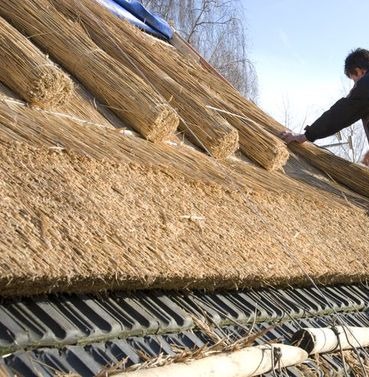
5: Brush
Brush structures are architectural constructions that rely entirely on plant materials and are typically found in tropical and subtropical regions, such as lush rainforests, where large leaves are abundant and suitable for building purposes. It is one of the types of construction material. Native Americans frequently utilized brush structures as temporary shelters or as dwellings. These structures were predominantly crafted using branches, twigs, leaves, and bark, resembling the design of a beaver’s lodge. They were known by different names, including wickiups and lean-tos, depending on the specific tribe or cultural group. These innovative and resourceful structures allowed indigenous communities to create functional and sustainable living spaces, harmonizing with the natural environment.

6: Wood
It is also one of the basic types of construction material. Wood, derived from trees and occasionally other fibrous plants, serves as a versatile construction material when transformed into lumber and timber, such as boards and planks. Its widespread use makes it a fundamental building material suitable for constructing various structures in diverse climates. Wood exhibits remarkable flexibility under loads, retaining its strength even when bent, and demonstrates exceptional vertical compression strength. Different types of wood possess unique qualities, even within the same species, resulting in specific species being more suitable for certain applications than others. The quality of wood is influenced by the conditions in which it grows. In the past, large wooden structures were often built using unprocessed logs.
Trees were cut to the required lengths, sometimes stripped of bark, and then fitted together using notches or lashings. In some regions and time periods, country homes or communities maintained personal wood-lots where trees were cultivated and harvested for construction purposes, resembling a well-tended garden. The advent of mechanized saws revolutionized the production of dimensional lumber, enabling faster and more standardized building techniques. This development contributed to the creation of modern Western-style homes characterized by efficiency and uniformity in construction.
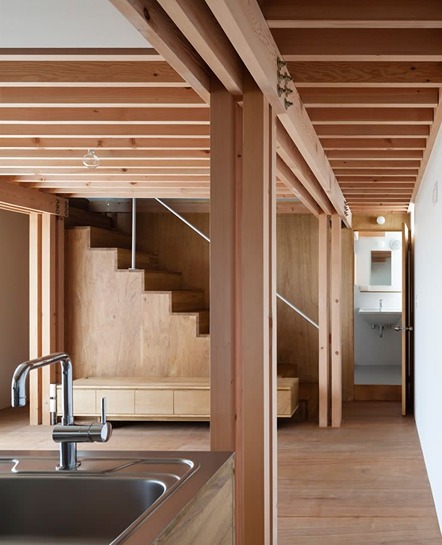
7: Masonry
A brick is a solid block created from kiln-fired materials, typically clay or shale, although lower quality materials like mud can also be used. It is also one of the types of construction material. Clay bricks are formed through the soft mud method, where the clay is molded, or the stiff mud process, where clay is extruded through a die and then wire-cut to the desired size.
Throughout the 1700s, 1800s, and 1900s, bricks were widely employed as a construction material. Their popularity likely stemmed from their superior fire resistance compared to wood, especially in densely populated urban areas, as well as their relatively low production cost. However, in the late 20th century, another type of block, the Cinder block, largely replaced clay bricks. Cinder blocks are predominantly made from concrete. In developing countries, a significant low-cost alternative is the Sandcrete block, which, although weaker, is more affordable, compared to fired clay bricks.
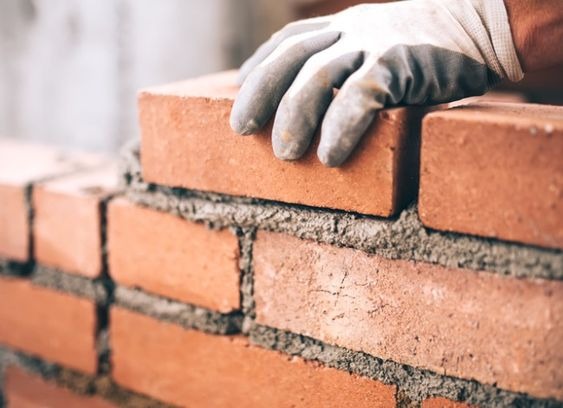
8: Concrete
Concrete is a composite construction material composed of aggregate, typically gravel and sand and a binder called cement. It is one of the major types of construction material. The most commonly used type of concrete is Portland cement concrete, which combines mineral aggregate, Portland cement, and water. Once mixed, the cement undergoes hydration, gradually hardening into a stone-like substance. When people refer to “concrete” in a general sense, they are usually referring to this material.
To enhance the tensile strength of concrete, especially for larger constructions, steel rods or bars known as rebar’s are incorporated, resulting in reinforced concrete. During the pouring of the liquid concrete mix around the ironwork, a vibrator is employed to eliminate any air bubbles that could weaken the structure. This process ensures the structural integrity of the reinforced concrete. Concrete has become the predominant construction material in the modern era due to its durability, malleability, and ease of transportation.
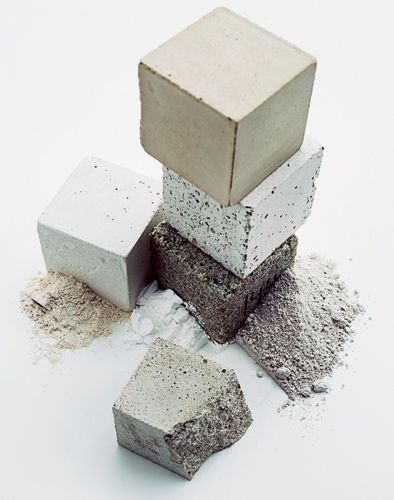
9: Metal
Metal serves various purposes in construction, acting as both a structural framework for larger buildings like skyscrapers and an external surface covering. It is also one of the important types of construction material. There are numerous types of metals employed in building projects. Steel, a metal alloy primarily composed of iron, is the commonly chosen material for metal structural construction. It possesses strength, flexibility, and, when refined or treated properly, can endure for extended periods. However, corrosion poses a significant threat to the longevity of metals. In some cases, the lower density and superior corrosion resistance of aluminum alloys and tin outweigh their higher cost. Brass, which was more prevalent in the past, is now primarily limited to specific applications or specialty items.
Metal plays a prominent role in prefabricated structures like the Quonset hut and can be observed in the construction of most urban cities. The production of metal demands substantial human labor, particularly when large quantities are required for the building industry. Additionally, other metals such as titanium, chrome, gold, and silver find application in construction. While titanium can be utilized for structural purposes, its cost far exceeds that of steel. Chrome, gold, and silver are primarily used for decorative purposes due to their expense and lack of structural qualities such as tensile strength or hardness.

10: Glass
Since the advent of glass, transparent windows have been employed to enclose small openings in buildings, offering the dual benefits of allowing natural light to enter while protecting against adverse weather conditions. It is one of the major types of construction material. Glass, typically manufactured from sand and silicates, possesses a brittleness characteristic. In contemporary architecture, the concept of “curtain walls” has emerged, enabling the entire exterior facade of a building to be enveloped in modern glass panels. Moreover, glass can be utilized to create expansive roof structures, spanning wide areas through the use of a “space frame” design.

11: Ceramics
Ceramics encompass a wide range of products, including tiles, fixtures, and other applications used in building construction. It is also one of the types of construction material. They find extensive use as coverings and fixtures within buildings, serving purposes such as ceramic floors, walls, counter-tops, and even ceilings. In numerous countries, ceramic roofing tiles are employed to provide durable and aesthetically pleasing coverings for various structures. While ceramics originated as a specialized form of clay pottery fired in kilns, they have evolved into more technically advanced areas, offering a diverse range of functional and decorative possibilities in the realm of building materials.

12: Plastic
In a Canadian high-rise apartment building, there are plastic pipes that penetrate a concrete floor. The term “plastics” refers to a broad category of synthetic or semi-synthetic organic products that are formed through condensation or polymerization. These materials can be molded, extruded, or shaped into various objects, films, or fibers. It is one of the types of construction material. The name “plastics” comes from their ability to be malleable or exhibit plasticity in their semi-liquid state. Plastics exhibit a wide range of characteristics, including heat tolerance, hardness, and resiliency, which can vary significantly among different types of plastics. The versatility of plastics, coupled with their consistent composition and lightweight nature, makes them indispensable in nearly all industrial applications today.

13: Foam
In the CIBC bank in Toronto, a foamed plastic sheet is being utilized as a backing material for firestop mortar. It is one of the types of construction material. In recent times, there has been a limited adoption of synthetic materials such as polystyrene or polyurethane foam for this purpose. These foamed plastics offer advantages such as being lightweight, easily moldable, and possessing excellent insulation properties. Typically, they are employed as components of structural insulated panels, where the foam is sandwiched between layers of wood or cement.

14: Cement composites
Cement bonded composites play a crucial role in the realm of construction materials. These composites are created by combining hydrated cement paste with wood or similar particles or fibers to produce precast building components. It is one of the major types of construction material. Binders like paper and fiberglass have been used in conjunction with cement to enhance the composite’s properties. However, wood and natural fibers contain organic compounds such as carbohydrates, glycosides, and phenolics that can impede cement setting. Therefore, it is essential to assess the compatibility between wood and cement before incorporating wood into cement bonded composites.
Wood-cement compatibility is evaluated by comparing a parameter related to the properties of a wood-cement composite to that of a neat cement paste. This compatibility is often expressed as a percentage. Researchers employ various methods to determine wood-cement compatibility, including assessing hydration characteristics, strength, interfacial bond, and morphology. These methods involve measuring the hydration characteristics of a cement-aggregate mix, comparing the mechanical properties of cement-aggregate mixes, and visually examining the micro structural properties of the wood-cement mixes.
Among the different methods, the measurement of the change in hydration temperature over time has been identified as the most convenient for assessing compatibility. Recently, Karade et al. conducted a review of compatibility assessment methods and proposed a technique based on the ‘maturity concept,’ which takes into account both the time and temperature of the cement hydration reaction. This approach offers valuable insights into evaluating the compatibility between wood and cement in cement bonded composites.
15: Aluminum
Aluminum is a versatile and widely used material in the construction industry due to its exceptional properties and numerous benefits. It is one of the important types of construction material. It is a lightweight metal with a low density, making it easy to handle, transport, and install in various construction projects. Despite its lightness, aluminum possesses excellent strength and durability, allowing it to withstand structural loads and harsh environmental conditions.
One of the key advantages of aluminum in construction is its corrosion resistance. Unlike many other metals, aluminum forms a natural oxide layer when exposed to air, providing a protective barrier against rust and corrosion. This inherent resistance to corrosion makes aluminum ideal for outdoor applications, such as window frames, roofing systems, and cladding, as it ensures long-lasting performance and minimal maintenance requirements.
Furthermore, aluminum is highly malleable and can be easily fabricated into different shapes and profiles, providing architects and designers with flexibility in creating innovative and visually appealing structures. It can be extruded, rolled, or cast into various forms, allowing for intricate designs and customized solutions. The versatility of aluminum extends to its compatibility with other materials, enabling composite systems that combine the strengths of different materials for enhanced performance.
In addition to its mechanical properties, aluminum is also an excellent conductor of heat and electricity. This characteristic makes it suitable for applications requiring thermal or electrical conductivity, such as heat sinks, electrical wiring, and power transmission lines. Moreover, aluminum has favorable thermal insulation properties, contributing to energy efficiency in buildings by reducing heat transfer and minimizing thermal bridging.
From a sustainability perspective, aluminum is highly recyclable, meaning it can be reused and remelted without loss of quality. Recycling aluminum requires significantly less energy compared to primary production, making it an environmentally friendly choice. The use of recycled aluminum in construction contributes to resource conservation, reduces waste generation, and lowers the carbon footprint of buildings.
